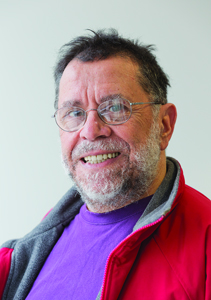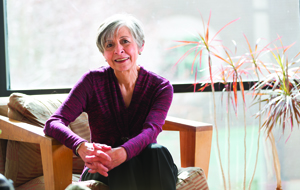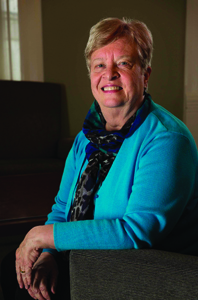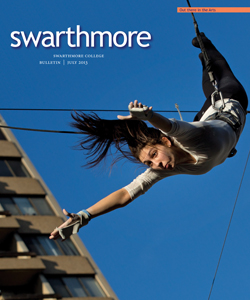3 Notables Retire from College

John Boccio. Photos by Laurence Kesterson.
John Boccio
Professor of Physics
Year he came to Swarthmore: 1967
Area of expertise: aspects of fundamental quantum theory, computational simulation of galaxy-galaxy collisions
In 46 years at the College, John Boccio has taught courses on, among other topics, quantum theory and chaos, fractals, complexity, self-organization, and emergence. His spring 2013 semester course, In Search of Reality, examined the assumptions, theories, and experiments associated with the study of reality in quantum physics in an attempt to decide whether the existence of an intelligible external reality has any meaning. The popular professor has authored, besides numerous shorter publications, two books on quantum mechanics, both of which he uses in his courses. The first is a junior-senior–level textbook for physics majors, which has evolved during decades of teaching and performing research in quantum mechanics. The second was used for the first time with first-year students in spring 2012.
At a celebratory dinner honoring the retirees, President Chopp toasted Boccio: “In a nearly half-century, you have left a shining and enduring mark on the teaching of physics here and well beyond our campus. You are the model of a teacher who loves his work—the field and the students.”

Aurora Camacho de Schmidt
Aurora Camacho de Schmidt
Professor of Spanish
Year she came to Swarthmore: 1992
Area of expertise: Mexican and Central American social movements in literature, indigenous populations, immigration, poetry, and postcolonial critical theory
Aurora Camacho de Schmidt came to Swarthmore 21 years ago after serving as director of the American Friends Service Committee’s Mexican-U.S. Border Program and working as a policy analyst, civil-rights advocate, and writer. Much of Camacho de Schmidt’s teaching, focusing on literature that embodies the struggles of marginal people in the Americas, reflects her research. One of her main areas of research examines the work of one of Mexico’s best-known journalists and authors, Elena Poniatowska. In collaboration with her husband, Arthur Schmidt, a historian at Temple University, she edited and translated one of Poniatowska’s major chronicles. Most recently, she published articles that investigate the links between visual images and the written word.
“You have been a wonderful teacher, community activist, immigrant rights advocate and inspiration to me in so many ways,” Chopp said. “Your grace, truth telling, and community building have made Swarthmore a better place—a place more just, more connected, more whole.”

Myrt Westphal
Myrt Westphal
Associate Dean of Student Life
Year she came to Swarthmore: 1987
Areas of expertise: strategizing, policy setting, program directing, academic support, student counseling
Myrt Westphal came to Swarthmore in 1987 as assistant dean and director of academic life, where she dealt with all issues pertaining to student housing, residential life, disabilities, counseling and academic support, advising on fellowships and prizes, and policy formulation. As associate dean of student life, she directed the student life team and was responsible for housing, resident assistants, the student judicial system, and student activities. Westphal describes her role as a dean as similar to that of a parent, based on respect, kindness, and adherence to principles. She also kicked off the highly popular Bedtime Story program with her readings of Goodnight Moon and Frederick.
At a celebration honoring Westphal in May, Dean of Students Liz Braun spoke of the “perfect pairing” of Westphal and Swarthmore—“like peanut butter and chocolate, Laverne and Shirley, Batman and Robin” she said. “Myrt and Swarthmore have a deep system of shared values, and for so many students and colleagues, Myrt has been the one to translate, educate, and remind us what those values are. She is someone who consistently goes the extra mile, giving tirelessly of herself to students and colleagues across campus, the first to respond with a helping hand, a listening ear, and a steady, calming presence.”
 Email This Page
Email This Page